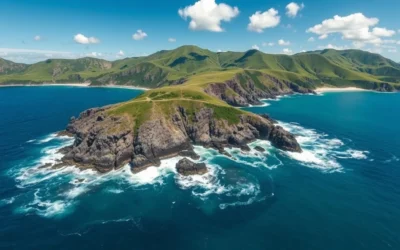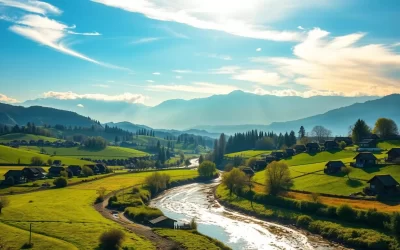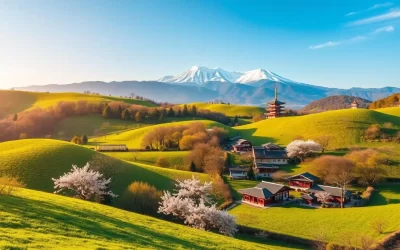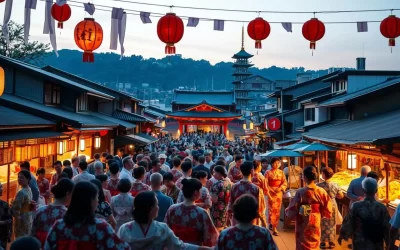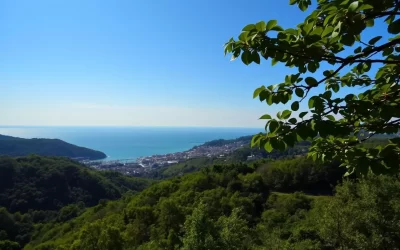Are you ready to experience the diverse beauty of Tokushima Prefecture? From the breathtaking cherry blossoms in spring to the vibrant autumn foliage, the region offers a unique experience throughout the year.
Understanding the seasonal patterns is crucial to making the most of your trip. With distinct characteristics in each season, you’ll want to plan your visit according to the weather and cultural events.
This guide will help you navigate the best times to visit, ensuring a weather-savvy trip to this beautiful region in Japan. You’ll discover how to avoid crowds and make the most of your travel experience.
Understanding Tokushima’s Climate and Seasons
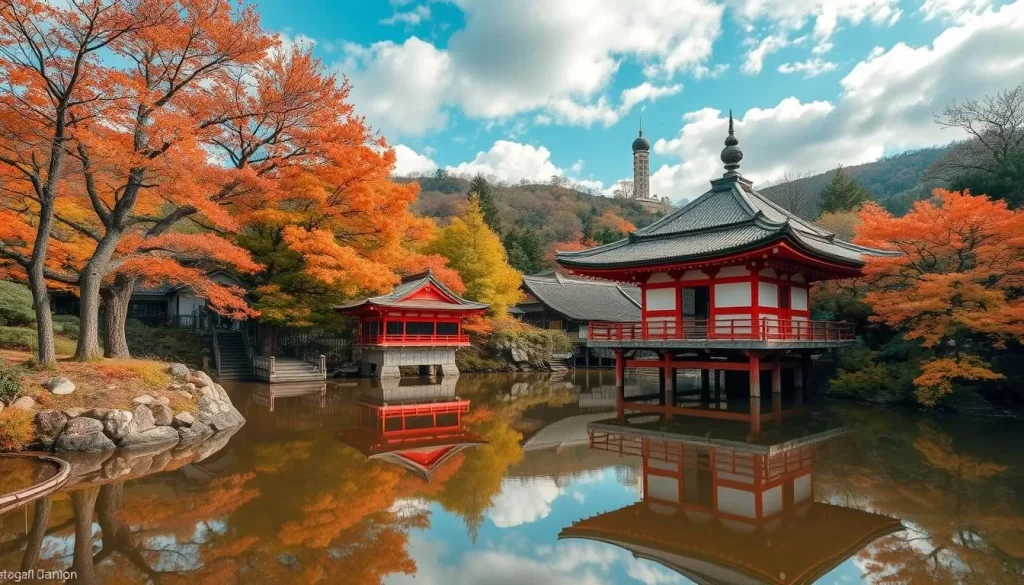
Understanding the climate of Tokushima Prefecture is crucial for planning a trip that suits your preferences. The prefecture’s geographic location on the island of Shikoku, Japan, significantly influences its weather patterns throughout the year.
Geographic Location and Its Impact on Weather
Tokushima’s geography, with its mix of mountainous regions and coastal areas, contributes to the varied weather conditions experienced across the prefecture. The mountains can create microclimates, with some areas receiving more rainfall or snowfall than others.
The Four Distinct Seasons of Tokushima
Tokushima experiences four distinct seasons: spring (March-May), summer (June-August), autumn (September-November), and winter (December-February). Each season offers unique experiences and attractions.
– Spring brings mild temperatures and cherry blossoms, creating picturesque landscapes.
– Summer features warm temperatures and vibrant festivals, including the famous Awa Odori.
– Autumn transforms the prefecture with spectacular foliage and comfortable temperatures.
– Winter offers a quieter experience with opportunities to enjoy hot springs and snow activities.
By understanding these seasonal variations, you can choose the best time of year to visit Tokushima based on your interests and preferences.
Spring in Tokushima: Cherry Blossoms and Mild Weather
As spring unfolds, Tokushima Prefecture transforms into a vibrant landscape of cherry blossoms and mild weather, making it an ideal time to visit. The season brings a unique charm to the area, with its picturesque landscapes and comfortable temperatures.
March to May: Temperature Ranges and Precipitation
During spring, Tokushima experiences a gradual warming trend, with temperatures ranging from mild to pleasant. March marks the beginning of spring, with average highs around 14°C (57°F), while May sees highs of up to 22°C (72°F). Precipitation varies, with March being relatively dry and May experiencing more frequent rainfall.
Cherry Blossom Viewing Spots and Festivals
Tokushima is renowned for its cherry blossoms, with numerous viewing spots throughout the prefecture. Popular locations include the castle grounds and various parks, where visitors can enjoy the beauty of the blossoms. The cherry blossom festivals, or “Hanami,” are a highlight of the season, offering food, drink, and merriment under the blooming trees.
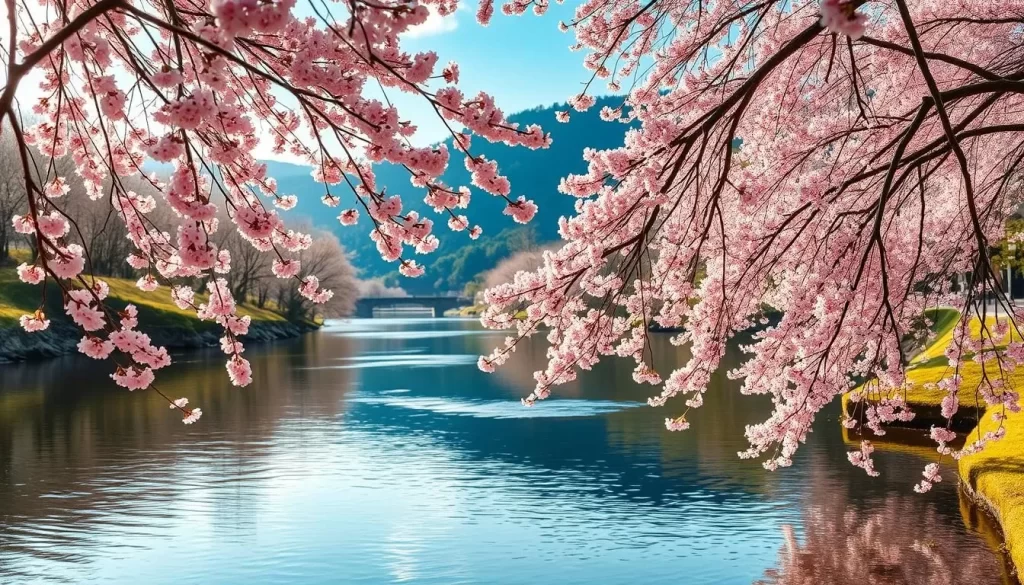
Spring Hiking and Outdoor Activities
Spring is an ideal time for hiking in Tokushima, with comfortable temperatures and beautiful scenery. Popular hiking destinations include the Iya Valley, Mount Tsurugi, and the pilgrimage routes of the 88 Temple Pilgrimage. Visitors can enjoy a range of activities, from gentle walks to challenging mountain treks, and experience the full beauty of the awakening landscape.
You’ll have the opportunity to explore the region’s natural beauty and enjoy a memorable experience. Whether you’re interested in activities like cycling through rural areas or visiting outdoor hot springs, Tokushima has something to offer.
Summer in Tokushima: Festivals and Coastal Escapes
The arrival of summer in Tokushima brings with it the excitement of festivals and the tranquility of its coastal escapes. As you plan your trip, you’ll find that the prefecture offers a unique blend of cultural experiences and outdoor activities during the summer months.
June to August: Heat, Humidity, and the Rainy Season
Summer in Tokushima is characterized by hot and humid weather, with temperatures often reaching their peak in July and August. Although the rainy season can impact the region, it typically doesn’t dampen the spirits of locals and visitors alike. You can expect occasional rain showers, but they often provide a welcome respite from the heat. The summer season is also a great time to enjoy the prefecture’s beautiful beach areas, such as Kaifu and Mugi, which offer swimming, surfing, and other water activities.
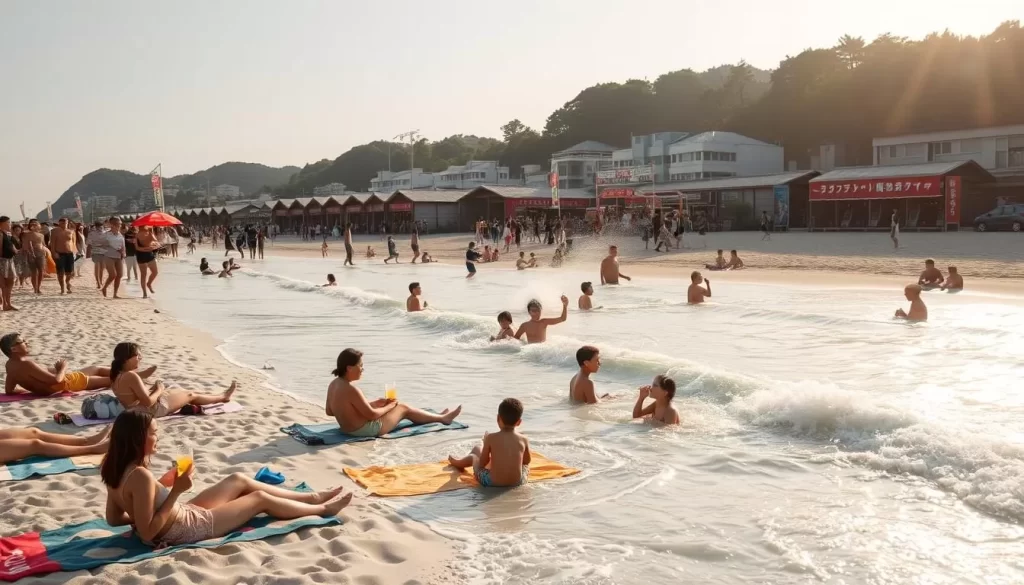
The Famous Awa Odori Festival Experience
One of the highlights of summer in Tokushima is the Awa Odori Festival, a vibrant celebration that takes place in mid-August. You can immerse yourself in the local culture by watching or participating in the traditional dance performances. The festival is a spectacle of color and energy, with dancers dressed in traditional attire performing intricate routines. It’s an experience that embodies the spirit of Tokushima and is not to be missed.
Beating the Heat: Beaches and Mountain Retreats
To escape the summer heat, you can head to the prefecture’s mountainous areas, such as Miyoshi and Mount Tsurugi, which offer cooler temperatures and a range of outdoor activities. Alternatively, the coastal regions provide refreshing ocean breezes and beautiful beaches where you can relax and enjoy water sports. Whether you prefer the tranquility of the mountains or the excitement of the beach, Tokushima has something to offer during the summer months.
Autumn in Tokushima: Foliage and Comfortable Temperatures
As the summer heat dissipates, Tokushima Prefecture transforms into a haven of autumnal delight. The fall season brings with it a picturesque landscape, comfortable temperatures, and a rich cultural heritage.
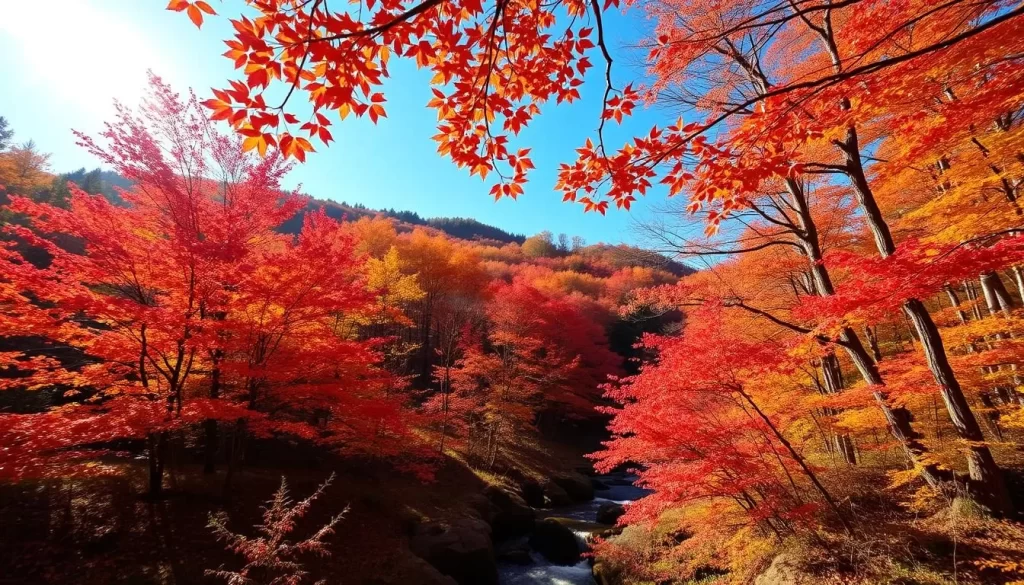
September to November: Weather Patterns and Typhoon Season
From September to November, Tokushima experiences a gradual cooling of temperatures, making it an ideal time to visit. However, it’s essential to be aware of the typhoon season, which can impact the region during this period. The average temperature ranges from 10°C to 20°C (50°F to 68°F), making it comfortable for outdoor activities like hiking and sightseeing.
Best Spots for Viewing Autumn Foliage
Tokushima is renowned for its stunning autumn foliage. Some of the best spots to witness this natural spectacle include the mountains of Tsurugi and the Iya Valley. The vibrant colors of the changing leaves create a breathtaking scenery, making it a perfect season for photography and nature walks.
Fall Harvests and Seasonal Cuisine
The fall season in Tokushima is also a time for harvests and seasonal cuisine. Local specialties include kuri-gohan (chestnut rice), doburoku (unrefined sake), and an array of seafood such as Pacific saury. Visiting local markets and participating in harvest festivals offers an authentic way to experience Tokushima’s food culture.
Winter in Tokushima: Quiet Beauty and Hot Springs
Tokushima Prefecture in winter is a hidden gem, featuring picturesque landscapes, exciting outdoor activities, and rejuvenating hot spring experiences. As the cold weather sets in, the region transforms into a serene and peaceful destination, ideal for those seeking a tranquil getaway.
December to February: Temperature Ranges and Snowfall
During the winter months, Tokushima experiences a range of temperatures, from cool to cold, with occasional snowfall. The average temperature ranges from 2°C to 10°C (36°F to 50°F), making it relatively mild compared to other parts of Japan. Snowfall is moderate, with some areas receiving significant snow, while others remain relatively snow-free.
| Month | Average Temperature (°C) | Average Snowfall (cm) |
|---|---|---|
| December | 8 | 5 |
| January | 4 | 10 |
| February | 5 | 8 |
Winter Activities and Hot Spring Experiences
Winter in Tokushima offers a variety of activities, including skiing and snowboarding at resorts like Tsurugisan Ski Area, snowshoeing in the mountains, and enjoying the region’s hot springs (onsen). Popular hot spring areas include Iya Onsen and Kamiyama Onsen, where you can soak while enjoying snow-covered landscapes. Soaking in an outdoor hot spring while surrounded by snow is one of the most memorable experiences Tokushima offers in winter.

You’ll discover a range of winter activities available in Tokushima Prefecture, from skiing and snowboarding to peaceful hot spring experiences. The mountainous regions offer winter sports opportunities at areas like Tsurugisan Ski Area, which features well-maintained slopes for various skill levels. You’ll also learn about the traditional Japanese hot spring culture that reaches its peak enjoyment during the winter months.
Tokushima Prefecture, Japan: Best Months for a Weather-Savvy Trip
To experience Tokushima at its best, it’s crucial to know the optimal months for a visit, balancing good weather with fewer crowds. Understanding the seasonal dynamics can significantly enhance your travel experience.
April to May: Optimal Spring Experience
Spring, particularly April and May, offers a wonderful experience in Tokushima with mild temperatures and beautiful landscapes. The weather is ideal for outdoor activities like hiking and exploring the region’s natural beauty. Visiting during this period allows you to enjoy the serene landscapes before the peak tourist season.
October to November: Perfect Autumn Visit
Autumn is another excellent season to visit Tokushima, with October and November being the best months. The autumn foliage is stunning, and the comfortable temperatures make it perfect for sightseeing and outdoor activities. The vibrant colors of the changing leaves create a picturesque backdrop for your travels.
Avoiding Peak Tourist Seasons and Crowds
To avoid the crowds, it’s essential to steer clear of Japanese national holidays and peak travel seasons. These include New Year’s (late December to early January), Golden Week (late April to early May), Obon (mid-August), and the peak cherry blossom season (early April). Visiting just before or after these peak seasons can offer similar weather conditions with significantly fewer tourists.
Consider visiting during the “shoulder seasons” such as early December or late May/early June. These periods often provide good weather with fewer tourists and better accommodation availability. Here’s a summary of the best times to visit and what to expect:
| Month | Weather | Crowds | Activities |
|---|---|---|---|
| April | Mild | Moderate | Spring Hiking, Cherry Blossom Viewing |
| May | Mild | High (Golden Week) | Outdoor Activities, Festivals |
| October | Comfortable | Moderate | Autumn Foliage, Harvest Events |
| November | Comfortable | Low | Autumn Foliage, Outdoor Activities |
| Early December | Cool | Low | Winter Illuminations, Hot Springs |
| Late May/Early June | Mild | Low | Outdoor Activities, Festivals |
By planning your trip during these recommended periods, you can enjoy a more relaxed and fulfilling experience in Tokushima, taking advantage of the region’s natural beauty and cultural attractions without the peak season crowds.
Natural Wonders of Tokushima: When to Visit
From the whirlpools of Naruto to the serene gorges of Oboke and Koboke, Tokushima’s natural attractions are a treasure trove of seasonal delights. The prefecture’s diverse landscapes offer a range of experiences that change with the seasons, making it essential to plan your visit at the right time to fully appreciate its beauty.
Naruto Whirlpools: Best Viewing Times
The Naruto Whirlpools are a natural wonder that can be enjoyed year-round, but the best viewing times depend on the tidal cycles. The whirlpools are most impressive during the high tide, especially during the spring and autumn equinoxes when the tidal currents are at their strongest.
Iya Valley and Vine Bridges: Seasonal Considerations
Iya Valley, known for its historic vine bridges, offers a unique experience with each season. Spring brings new greenery, while autumn transforms the valley with vibrant foliage. Visiting during these seasons allows you to enjoy the valley’s serene beauty and historic landmarks in a picturesque setting.
Oboke and Koboke Gorges: Optimal Seasons
The Oboke and Koboke Gorges are renowned for their crystal-clear waters and dramatic rock formations. While they are beautiful year-round, spring (April-May) and autumn (October-November) are particularly stunning. Spring brings cherry blossoms and fresh greenery, whereas autumn showcases vibrant foliage. Summer is ideal for water activities, and winter offers clear views of the gorges’ dramatic beauty.
Cultural Experiences by Season
Tokushima Prefecture offers a rich cultural experience that varies with the seasons, allowing you to immerse yourself in traditional activities year-round. The region’s cultural heritage is deeply rooted in its history and is reflected in the numerous festivals, events, and crafts that take place throughout the year.
Seasonal Festivals and Events Calendar
Tokushima is known for its vibrant festivals, which are an integral part of its culture. The Awa Odori Festival, held in August, is a highlight, attracting visitors from around the world. Other notable events include the spring festivals celebrating the cherry blossoms and the autumn festivals honoring the harvest. You can plan your visit around these events to experience the local culture firsthand.
- Spring: Cherry blossom viewing parties
- Summer: Awa Odori Festival
- Autumn: Harvest festivals
- Winter: New Year (Oshogatsu) celebrations
Traditional Crafts and Workshops Year-Round
Throughout the year, you can engage in various traditional crafts and workshops, gaining hands-on experience in local artisanal practices. Tokushima is famous for its Awa Indigo Dyeing, Awa Washi (handmade paper), and Otani pottery. Visit places like the Aizumi Indigo House and the Awagami Factory to learn these traditional crafts and take home unique souvenirs.
Some of the activities you can participate in include:
- Awa Indigo Dyeing workshops
- Awa Washi (handmade paper) making
- Otani pottery classes
- Traditional woodworking and bamboo crafts
Regardless of the time of year you visit, you’ll find opportunities to connect with local artisans and create lasting memories.
Practical Travel Tips for Each Season
As you plan your visit to Tokushima, consider the seasonal nuances that can impact your trip. Being prepared for the local climate and customs can significantly enhance your travel experience.
Packing Essentials by Season
Tokushima’s climate varies significantly across seasons, making it crucial to pack accordingly. In spring, bring layers for mild temperatures and potential rain showers. Summer requires lightweight, breathable clothing, while autumn demands warm layers as the temperature drops. Winters are cool, especially in the mornings and evenings, so pack warm clothing.
Essential items include: comfortable walking shoes, sun protection (summer), rain gear (spring and autumn), and warm clothing (winter).
Transportation Considerations Throughout the Year
Transportation in Tokushima is generally reliable, with buses and trains connecting major attractions. However, during peak travel seasons like cherry blossom season and the Awa Odori Festival, services can be busier. Planning ahead and checking schedules in advance is advisable.
Consider renting a car for more flexibility, especially during autumn foliage or when exploring rural areas like the Iya Valley.
Accommodation Recommendations and Seasonal Rates
Accommodation prices in Tokushima fluctuate with the seasons. Peak rates are during cherry blossom season, Golden Week, Awa Odori Festival, and autumn foliage. Booking in advance is crucial during these periods. You can choose from traditional ryokans, modern hotels, and budget-friendly guesthouses, offering a range of options for different budgets.
For the best value, consider visiting during the shoulder seasons when rates are lower and availability is higher.
Conclusion: Planning Your Weather-Perfect Trip to Tokushima
Whether you’re drawn to cherry blossoms, summer festivals, autumn foliage, or winter hot springs, Tokushima has a perfect season for you. The optimal times to visit Japan and experience Tokushima’s beauty are late April to early May and October to November. These periods offer comfortable temperatures and natural beauty with fewer crowds. Now, you can confidently plan your trip based on your preferences, making the most of your travel experience in this unique region.
The above is subject to change.
Check back often to TRAVEL.COM for the latest travel tips and deals.

